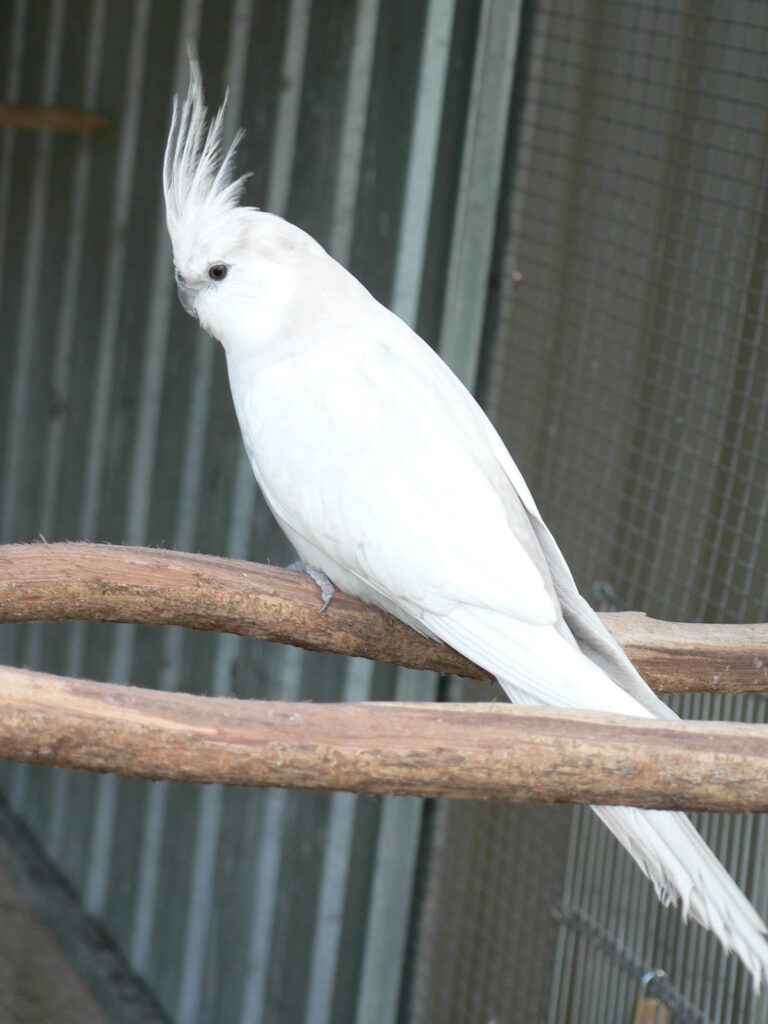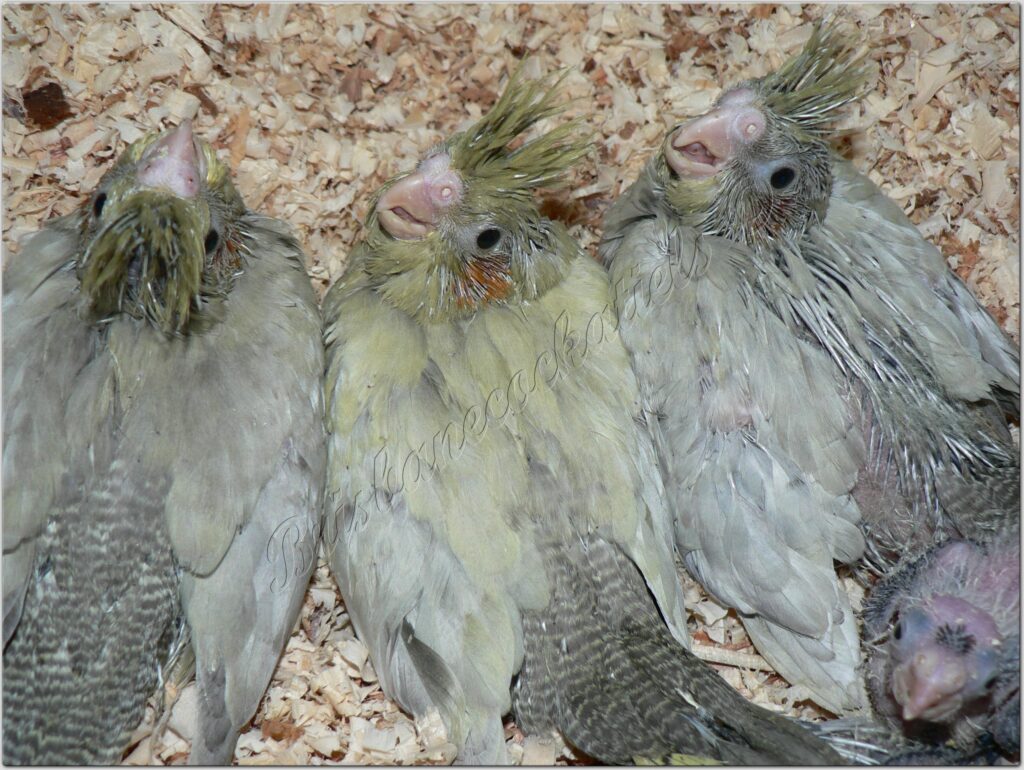Olive
Suffused Mutation

Cockatiels have the ability to produce only psittacin (yellow and orange) pigments and melanin pigments. They can not produce the structural colours required to give visual or green colouration. Because of this it is impossible for cockatiels to be Olive in colour.
The effect that is in fact seen in the Australian Olive mutation is due to a dilute gene that reduces the amount of melanin deposited in the feathers. This reduction in melanin is the greatest of all the dilute mutations and as a result allows the normally hidden yellow pigments to become more visible.
This suffusion of grey melanin pigments and yellow psittacin pigments gives a combined visual appearance of an olive cockatiel.

Olive or suffused is a dilute gene and as such only affects the depositing of the melanin pigment in the feathers. The beak, feet and nails are not affected and so retain the normal dark grey/black colouring found in normal greys. The dilute gene actually reduces the quantity of melanin that is deposited into the newly growing feather from the melanocytes in the feather follicle. Only 10 – 15% of the normal quantity of melanin produced can move into the feathers even though it is still produced normally.

Olives are generally lighter on the flights and tail than on the back which is not usual for cockatiels. Also the hens are are more commonly darker in colour with some hens retaining what almost appears like a dark hood over the head region. Unlike most mutations, in the olive the males actually get lighter as they mature compared to normal where the males appear darker from increased melanin deposits.
There also seems to be a variation in the colours between individual birds with some being lighter and some darker appearing almost normal grey in colour. I had a hen that was only slightly lighter than a normal grey that I assumed was only split olive but out of many clutches when mated with visual olive males gave me all visual birds.
These variations in darkness or lightness between birds has led to the terms dark factor and light factor being used. Below are a few pictures of light and dark factor olives to show the comparison


This picture is an example showing the variation between birds even at this young an age. The baby in the centre almost lives up to its mutation name of being ‘olive’ coloured. It is lighter coloured all over suggesting the action of the suffused gene is stronger in this bird than the others allowing less melanin to be deposited and more psittacin (yellow) pigment to be visable.

Reach Out To Us
Interested in adding a new feathered family member learning more? Reach out to us by clicking on the button below.